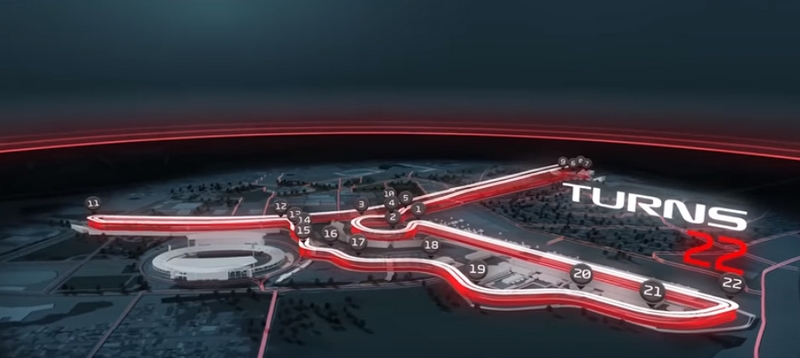The Communist-ruled republic of Vietnam and Formula One might not be the most likely of bedfellows. Yet confirmation that the country’s first grand prix will take place on the streets of Hanoi in 2020 is of little surprise given F1’s global expansion over the past two decades.
F1’s owner, Liberty Media, wants new markets to expand their fanbase. Vietnam, like so many other modern F1 venues, is angling for the prestige and worldwide audience that influences investment and tourism long after the chequered flag is waved. It is a simple equation then, but one at which Liberty at least is going to have to really work.
Hanoi will host the inaugural Vietnamese Grand Prix on a 3.458-mile street circuit designed by Herman Tilke’s company, located 12km west of the city centre near the My Dinh National Stadium. It is being backed not by the state but by one of the country’s biggest private businesses, the Vingroup.
The track design is intriguing, combining elements of other circuits including the Nürburgring, Monaco, Suzuka and Sepang. It has been a collaborative process with the F1 motorsport team, headed by Ross Brawn, also involved – an indication that spectacle and the ability to race has been at the heart of the process.
For Liberty, it is the first new circuit they have brought to the calendar since they took over the sport in 2017 and it is unlikely to be a coincidence that it has been announced a week before they reveal their latest financial statements and plans to investors. With the deal done their task is to ensure it is successful and perhaps the first issue they face is just where Hanoi fits in F1’s future.
This season there are 21 races, a number F1 has hosted only once before. Liberty’s aim is to expand the sport – particularly in what they call “destination cities” – and Hanoi fits the bill perfectly, as does Miami, where they are still hoping to stage a race. Las Vegas, Johannesburg’s Kyalami circuit and both Zandvoort and Assen in the Netherlands have also been mooted as potential venues, meaning that if the calendar remains the same there will be 22 races in 2020 and maybe 23 or more thereafter.

Photograph: Nhac Nguyen/AFP/Getty Images
This is a potential expansion that has been met with almost universal disapproval from the teams. The Red Bull team principal Christian Horner described 21 races as the saturation point. “There’s only so many chapters you can have in a book and I think at some point you go beyond what’s relevant,” he said.
Renault’s managing director Cyril Abiteboul has gone even further, arguing that the calendar should be cut to between 15 and 18 races in order to maintain a sense of occasion. “I appreciate the reason why, commercially we need to grow the calendar, but as far as I’m concerned, I would be for a massive contraction of the sport,” he said.
Liberty will clearly face a struggle to continue adding races in the face of this level of opposition. Yet, as Abiteboul noted, they have a commercial imperative to do so. Race fees are a major source of income to the sport and the owners have been under pressure to lower the costs, especially at European circuits. Spa recently did a deal with a reduced fee and both Silverstone and Monza are attempting to do the same. New venues can alleviate that but fitting Vietnam and potentially others into the schedule will be a far from easy task.
In the long term, and the deal in Vietnam is described as “multi-year”, the new race will perhaps be the greatest indicator yet of just how differently Liberty will operate from Bernie Ecclestone. Under the latter, a remarkable range of venues that had never hosted F1 before were added, including, among others, China, Baku, Abu Dhabi, South Korea, Turkey, India and Singapore. Once the race fees were rolling in, however, Formula One management’s interest diminished.
With no history of competing in or following motorsport, many managed little more than hosting their annual weekend in the sun before disappearing. India lasted three years, South Korea four, Turkey, despite a layout much admired by drivers, seven. At Mokpo in South Korea the vast swathes of empty grandstands sat in judgement on a sport that was entirely failing to make any impression on the country and the track was locked and empty for 51 weeks a year.
This will not work for Liberty, whose aim is to grow revenues by increasing fans, with one of their major revenue streams expected to be earned from pay-to-view streaming. Vietnam is just the sort of market into which they want to sell their service so they have to make sure it does more than simply host a race. Hanoi will be the test of whether they can sway the hearts and minds of the Vietnamese people too.
guardian.co.uk © Guardian News & Media Limited 2010
Published via the Guardian News Feed plugin for WordPress.


